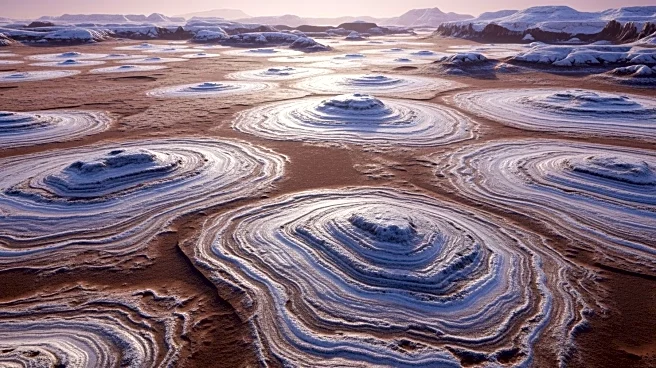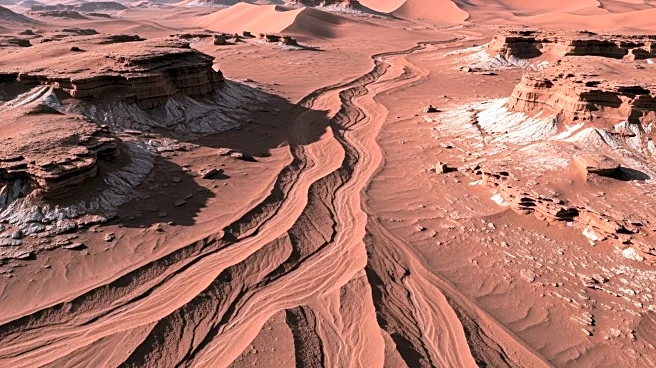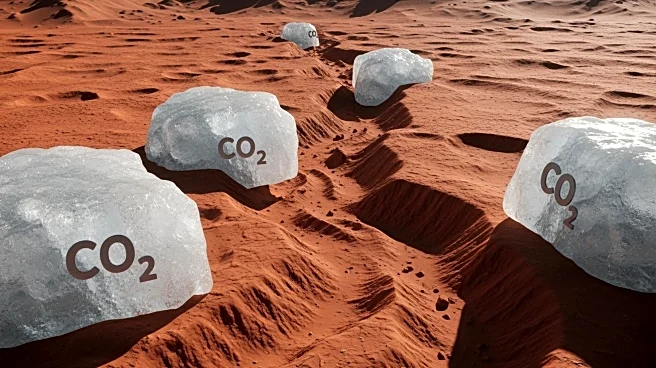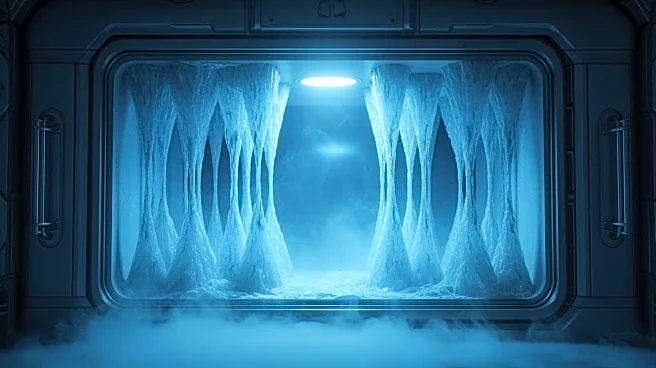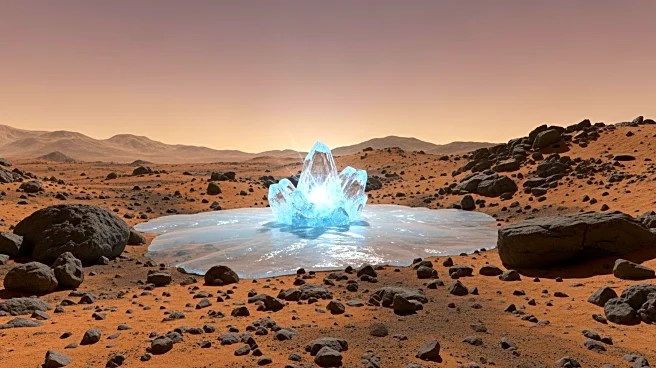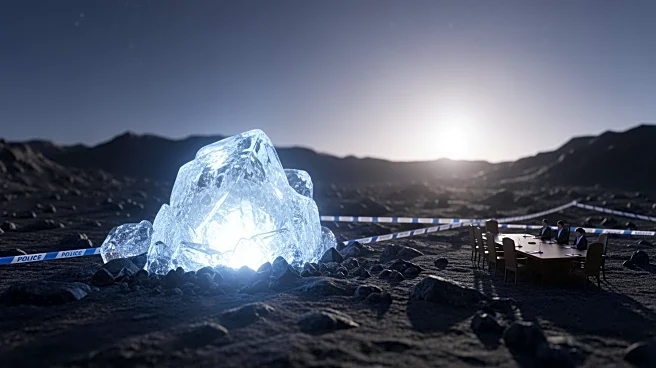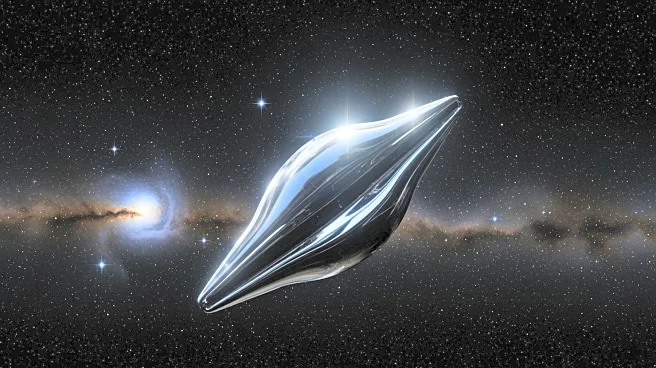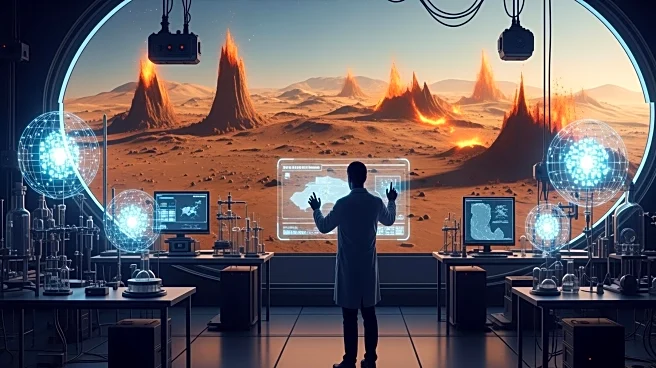What's Happening?
A study conducted by Utrecht University has uncovered a fascinating phenomenon on Mars where blocks of carbon dioxide ice, or dry ice, appear to carve gullies in the Martian sand dunes. These gullies resemble
the burrowing paths of fictional sandworms from the movie 'Dune.' The research involved simulating Martian conditions in a laboratory, where CO2 ice blocks were placed on sand dunes under low pressure and cold temperatures. As the ice warmed, it sublimated, turning from solid to gas, and the trapped gas built pressure until it explosively vented, propelling the ice downslope and carving trenches in the sand. This process offers a physical explanation for the gullies, ruling out liquid water as a cause, which has implications for understanding Martian habitability.
Why It's Important?
The discovery of dry ice gullies on Mars is significant as it provides insight into the planet's geological processes without the presence of liquid water. This understanding is crucial for assessing Mars' potential habitability and for future exploration missions. The study also offers a new perspective on Earth's landscape formation by examining similar processes on another planet. The findings could influence how scientists interpret geological features on Earth and other celestial bodies, enhancing our knowledge of planetary science and the dynamics of surface changes in extreme environments.
What's Next?
Further research may focus on exploring other Martian regions to identify similar dry ice activity and its impact on the planet's surface. Scientists might also investigate the potential for dry ice processes to occur on other planets or moons with similar environmental conditions. Additionally, the study could lead to advancements in simulation techniques for planetary exploration, aiding future missions in understanding and navigating Martian terrain.
Beyond the Headlines
The study highlights the importance of interdisciplinary research in planetary science, combining elements of physics, geology, and environmental science. It also underscores the role of innovative simulation methods in uncovering natural phenomena that are not directly observable. The findings may inspire new approaches to studying planetary surfaces, emphasizing the need for creative solutions in space exploration.
